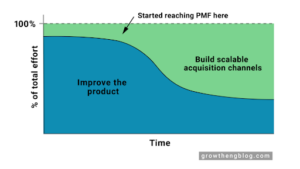The benefits of implementing a modern data stack are enormous — centralized and organized data allows you to tackle more complex and impactful analysis, while building trust and a data-driven culture.
If you delay implementation for too long, you’re missing out on the above, while also encountering a number of consequences.

You shouldn’t query your database directly
People don’t try to do this very often, but it’s worth mentioning — you shouldn’t query your database directly. Your website and product will slow down, which harms your user experience and can lead to lost sales.
You can’t get consistent answers from data that isn’t transformed
If you aren’t transforming your data, it’s difficult to determine if it’s reliable.
First, as data volume grows, it becomes more difficult to maintain clean data without a transformation process. You can’t effectively work with a data set if it’s plagued by duplicates and formatting errors. Manual scrubbing isn’t a realistic solution.
Transformation is also critical for creating a universal source of truth, where data is systematically organized, with repeatable methodology, so agreed upon definitions and measurements are possible. Without transformation, you’re letting individual teams define metrics to measure against. This leads to multiple “right” answers to the same questions and arguments between teams.
This impedes collaboration and consensus on what success looks like for your company, making it difficult to create a data-driven culture.
You’re missing insights
You might think to yourself, “This seems faster, sure. But it also requires an investment of some sort. We get by fine with our current analytics.”
That’s an understandable perspective, especially if your company is growing. But “good enough” isn’t as good as you think. Some insights are only visible when data is integrated and organized for analysis.
Think about this marketing example. You have two advertising sources that produce leads. Using the built-in reporting tools in your ad platforms, you can see one lead source has a lower cost per lead (CPL) than the other.
But as you follow these leads throughout their lifetime, you discover the leads with a higher CPL are actually more likely to renew their contracts. They have a higher lifetime value (LTV). This type of complex analysis is only possible with a modern data stack.
When you begin to automate these analyses, you can also avoid busy work and seek new actionable insights that you otherwise wouldn’t have the bandwidth for.
Switching costs will only rise
Like any change in operations, switching costs should be a concern. Without a data stack, adding more data sources and building more reports will result in clunky ad hoc processes. You’ll create a large web that needs to be untangled and a lot of reports that need to be rebuilt when you transition to a data stack. The earlier you put in the right infrastructure, the less challenging it is to make the transition.
Modern data stacks can be set up incredibly quickly, but data work still takes time. The more queries you have to re-write, or the more column names you have to manually adjust in your BI tools, the more time you’re wasting.
Considering you need someone with a strong quantitative skill set, or even a data analyst or data engineer, to work with your data effectively, you’re going to be wasting the time of an expensive employee. The sooner you make the switch, the less time that employee will spend on getting your data in shape and the more time they’ll spend performing analysis for your teams and digging for insights that can positively impact your business.
This problem grows in another way, too. The longer you stick with existing infrastructure, the more likely you are to wind up in a cycle of insights requiring substantial resource commitments. As this cycle perpetuates, it becomes harder to clear the bar of making that first piece of analysis worth it. That challenge can stand in the way of change.
Your options for implementing the modern data stack
The consequences of delaying action are rarely worth it, so it’s time to start looking at your options. Start by learning more about the pros and cons of buying, building, and outsourcing your data stack.


